December’s high resolution albums include jazz and classical, at 24/88 and 24/96 sampling. I burned them all to DVD+R media using a software program (the procedure is described here) and listened to them with an OPPO BDP-83/NuForce universal player, Lamm LL1 preamplifier, McIntosh MC1201 power amplifiers, and Carver Mark IV ribbon speakers. I obtained all of these albums courtesy of HDtracks on-line. Some albums are remastered from the original recordings made in the 1970’s on analog tape and converted to SACD two-channel and multi-channel surround sound. The audio files at the HDtracks website are two-channel PCM versions.
![]()
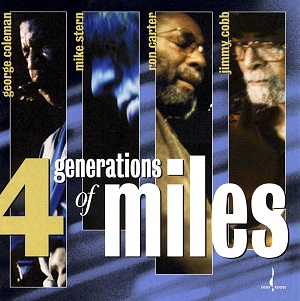
At first, you might think this is a jazz album with trumpet soloist, honoring the classic jazz trumpeter Miles Davis. But, rather, it is a group of musicians, all of whom played in Davis’ jazz ensembles over the years, and the soloist is saxophone only. I think that is a bit odd, but the music is certainly Davis group style. However, I was surprised to hear an electric piano using various synthesizer sounds which did not exist in Miles Davis early days. Nevertheless, the album is enjoyable, and the mic placement is even similar to the old jazz recordings.
4 Generations of Miles – Ron Carter, Jimmy Cobb, George Coleman, Mike Stern – Chesky Records – 2002 – 24 Bit/96 kHz – Category: Jazz
- Performance:

- Sonics:

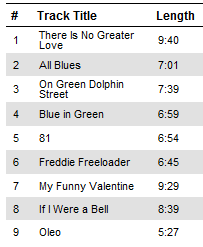
![]()
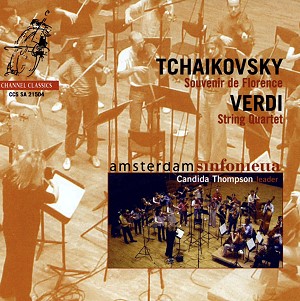
Well, if you like violins, you will love this disc. Pyotr Tchaikovsky (1840-1893) uses them with rich harmonic structure throughout these compositions, some of which come from Russian folk melodies. Giuseppe Verdi’s (1813-1901) contribution to the album are some of his string quartet pieces, which is chamber music. Verdi was known mostly for his operas, such as Rigoletto and La traviatta. He studied counterpoint in Milan early in his life, and attended operatic performances. It was then that he decided on a musical career in theater.
The fine details of orchestration are very evident in this excellent recording.
Tchaikovsky/Verdi – Sovenir de Florence – Amsterdam Sinfonietta – Channel Classics – 2004 – 24 Bit/88.2 kHz – Category: Classical
- Performance:

- Sonics:

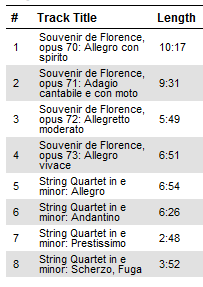
As our random test sample for the December reviews, I did a spectral analysis of the first few seconds of the first track. The spectrum is shown below. The music rolls off slowly to 25 kHz, and then there are some noise peaks above that frequency, indicating that the original recording was DSD (SACD). So, the disc is a true high resolution recording.
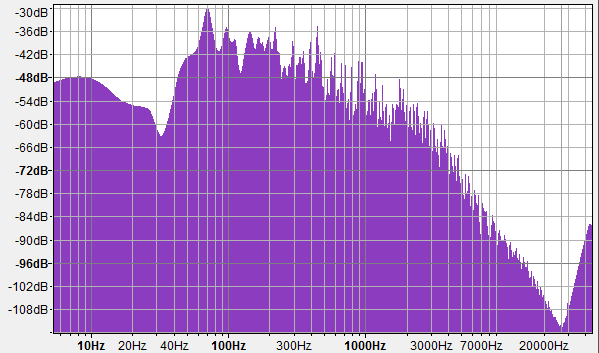
![]()
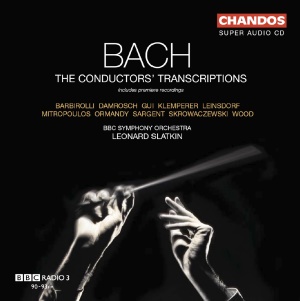
Remember (if you are old enough) when The Beatles music was transcribed for symphony orchestra? Well, this is sort of the same kind of thing, but it is classical music that was composed for one or more specific instruments, and transcribed for full orchestra. It all works very well, except for the first track, “Toccata and Fugue in D Minor”, which may very well be the most famous pipe organ composition there is. It sounds ridiculous played as a symphonic piece. The remaining tracks are very enjoyable however, and in fact, a couple of them sound more musical with full symphony than they do when played with the instruments they were written for.
Bach: The Conductors’ Transcriptions – BBC Symphony – Chandos Records – 2004 – 24 Bit/88.2 kHz – Category: Classical
- Performance:

- Sonics:


![]()
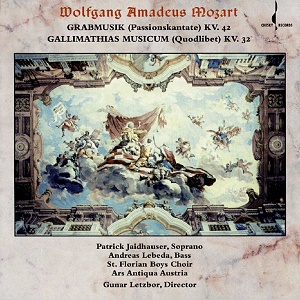
Wolfgang Amadeus Mozart (1756-1791) had a short life, but was incredibly prolific (more than 600 compositions), partly due to the fact that he was composing by age 5, and was court musician in Salzburg by age 17. Good musicians are often good at math as well, and if Mozart had become a mathematician instead of a composer, no doubt he would have obtained his doctorate while still a teenager.
This album consists of 25 short (one of them is only 19 seconds long) pieces that sound like a mixture of funeral music and then what you might hear at the wake after the funeral. That’s not to say they are not enjoyable, because they are, but just be prepared for alternating major and minor keys. Also, the soprano and bass singers are placed to the extreme left and right, with the choir in the background. The two soloists should have been miked closer together. Too much ping pong effect.
Mozart: Grabmusick – Ars Antiqua Austria – Chesky Records – 1998 – 24 Bit/96 kHz – Category: Classical
- Performance:

- Sonics:


![]()

Next to Beethoven’s (1770-1827) Symphony No. 5, the No. 9 is my favorite, especially the last movement. However, the performance here is not as nice as the one I bought on LP decades ago (and stupidly gave away when CDs hit the market). Ironically, that recording was also on Deutsche Grammophon. Beethoven studied with Haydn and became renown as a piano virtuoso. He was completely deaf by the time he was composing his last symphonies, yet they are spectacular in their genius and harmonic placement of the myriad instruments.
Beethoven: Symphonie No 9 – Claudio Abaddo, Berlin Philharmonic Orchestra – Deutsche Grammophon – 2002 – 24 Bit/96 kHz – Category: Classical
- Performance:

- Sonics:


![]()


